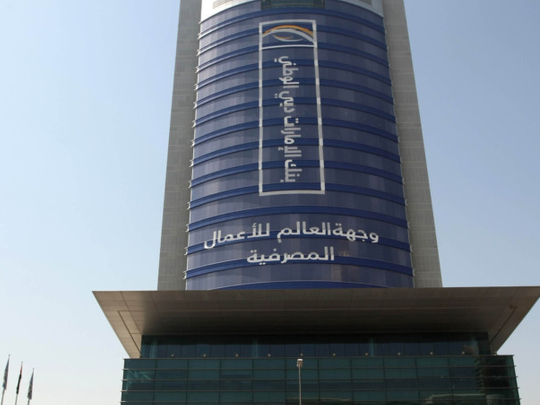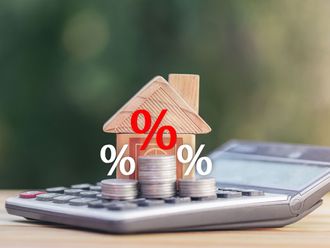
Dubai: Increased operational efficiency has helped Emirates NBD - UAE’s biggest lender by assets – to post a 31 per cent jump in net profits to Dh837 million during the first quarter of the year –when its total income declined marginally by 2 per cent to Dh2.6 billion.
Net profit for the first quarter of 2013 of Dh837 million is up 31 per cent compared with Dh641 million in the first quarter of 2012 and up 34 per cent from the fourth quarter of 2012, the bank said in a statement. Net impairment loss on financial assets of Dh888 million, improved by 19 per cent compared with The first quarter of 2012 and 6 per cent from the fourth quarter of 2012.
The bank’s total assets grew 2 per cent to Dh315.8 billion up from Dh308.3 billion at the end of 2012 while customer loans at rose 1 per cent to Dh220.6 billion, up from Dh218.2 billion at the end of 2012.
Its customer deposits increased 4 per cent to Dh223. billion, while headline loan to deposit ratio improved to 99 per cent from 102 per cent at the end of 2012. Capital adequacy ratio remains at healthy level of 19.7 per cent.
Fitch Ratings has affirmed Emirates NBD’s (ENBD) Long-term Issuer Default Rating (IDR) at ‘A+’ with a Stable Outlook and Viability Rating (VR) at ‘bb+’. However, the bank had substantial exposure, to the tune of Dh75.7 billion or around 35 per cent of total net loans to Dubai and government-related entities, as well as Dubai’s real estate market by the end of 2012. “This has exposed the bank to major corporate restructuring in Dubai,” Fitch said.
Rick Pudner, Emirates NBD’s Chief Executive Officer, said the bank has significantly de-risked and strengthened its balance sheet, that “offers strong platform for capturing future growth opportunities”.
“Nevertheless, the UAE remains well-positioned to enjoy robust GDP growth of 3.8 per cent in 2013 driven by solid expansion in non-oil sectors,” he said. “In Dubai, growth is expected to accelerate to 3.9 per cent in 2013 as manufacturing, tourism and hospitality continue to benefit from strengthening regional consumption and investment. Emirates NBD is well placed to take advantage of the expected acceleration in Dubai’s growth.”
Analysts say the quality of earnings of the bank has, however, improved over the previous year. “Emirates NBD has managed to rope in its operating expenses, which were down 4 per cent year-on-year as a result of cost-optimisation efforts rolled out in the previous year,” Naveed Ahmad, CFA, Manager – Research at the Global Investment House, said. “Asset quality indicators showed slight improvement while coverage increased to 51.4 per cent from 45.3 per cent in the first quarter of 2012. Provisions were therefore lower by 19 per cent year-on-year.”
Pudner said, his bank would opt for inorganic growth in international markets. “We would like to see 20 per cent of our revenue coming from outside the UAE operations in 4 to 5 years,” he said in a teleconferece.
External environment
Pudner, who will leave the bank by the end of the year, said, the external environment for 2013 remains challenging in the context of recessionary risks in the Eurozone, below trend US growth and an expected slowdown in Asia. However, he remains optimistic on the bank’s outlook.
Emirates NBD’s Chief Financial Officer, Surya Subramanian, said: “Pre-provision operating profit, a core strength for the bank, shows signs of growth after a few resilient quarters last year. The Retail business and Islamic franchise have been a key driver for this growth. Our balance sheet is well managed and we continue to de-risk the book.”











